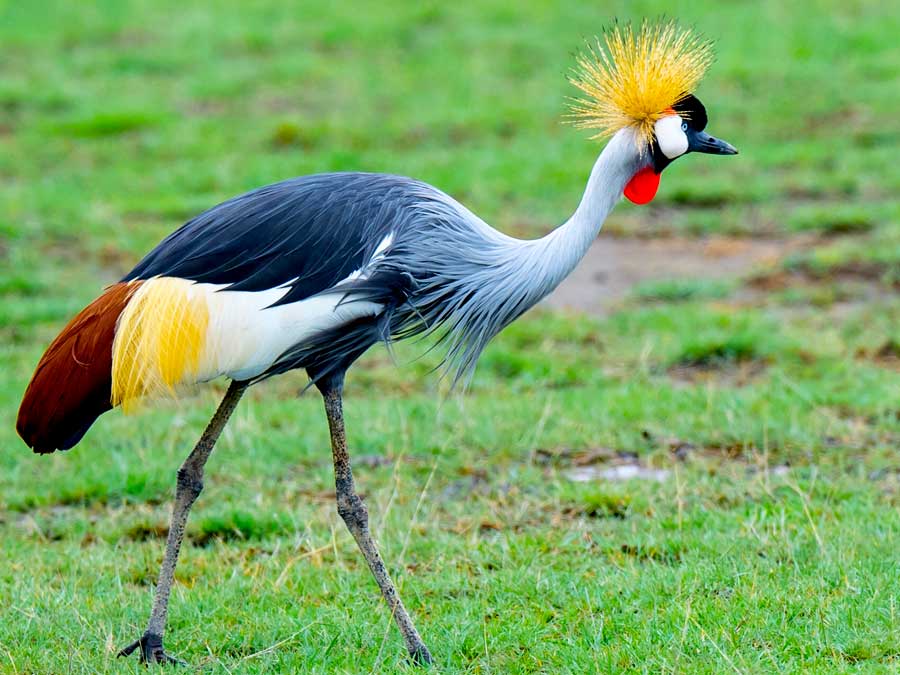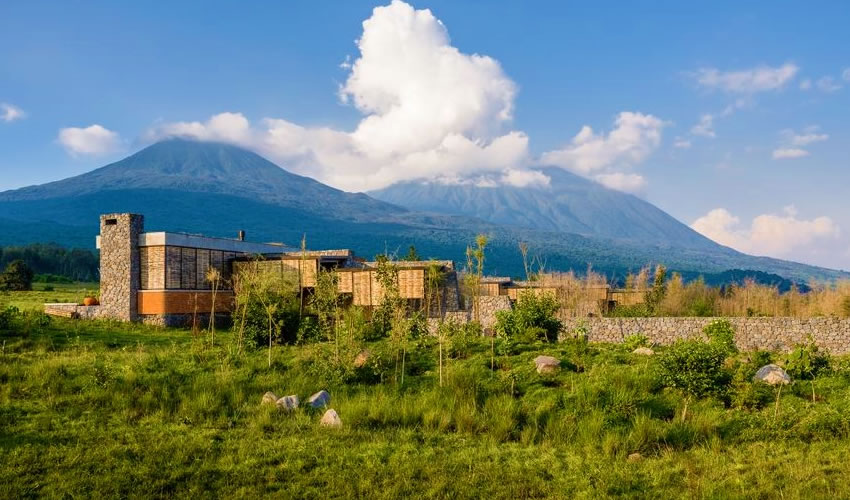- GET IN TOUCH WITH US:
- +256 753518160
- +256 777842166
- info@experiyatourcompany.com

Can I visit gorillas and relax at Lake Bunyonyi afterward?
November 10, 2025
Are there wellness retreats in Uganda?
November 10, 2025What’s the best time for birdwatching in Uganda?

What’s the Best Time for Birdwatching in Uganda?
Uganda is often called the “Pearl of Africa,” and for birdwatchers, it shines brightest through its extraordinary diversity of birdlife. With more than 1,080 recorded bird species, this small landlocked country is one of the most rewarding birding destinations in the world. From the snow-capped peaks of the Rwenzori Mountains to the papyrus swamps of Lake Victoria, from dense rainforests to open savannas, Uganda offers endless opportunities to spot both endemic and migratory birds. But when exactly is the best time for birdwatching in Uganda? The answer depends on what you want to see, the regions you plan to visit, and the kind of experience you’re seeking.
This detailed guide explores Uganda’s birding seasons, regional highlights, and expert tips to help you plan your ultimate birdwatching safari.
Why Uganda Is a Birdwatcher’s Paradise
Uganda’s unique position — straddling the equator and lying at the crossroads between East African savanna and Central African rainforest — gives it an incredible range of habitats. This ecological diversity is what makes the country so special for birders. In a single trip, you can move from forested mountains where tropical species thrive to open wetlands teeming with waterbirds, and from riverbanks full of fish eagles to grasslands echoing with lark and weaver songs.
Uganda is home to over 24 Albertine Rift endemics, species found nowhere else on Earth, such as the Ruwenzori turaco, Grauer’s broadbill, and dusky crimsonwing. It also boasts iconic birds like the shoebill stork, the great blue turaco, and the African green broadbill. For serious birders, Uganda is not just another destination — it’s a lifetime goal.
Understanding Uganda’s Climate and Birding Seasons
Uganda’s climate is generally mild and tropical, with temperatures ranging from 18°C to 28°C throughout the year. Rainfall patterns, rather than temperature, define the country’s seasons and determine the best birdwatching times.
There are two main dry seasons and two rainy seasons:
-
Dry seasons: December to February, and June to August
-
Rainy seasons: March to May, and September to November
While Uganda’s birds can be observed year-round, each season offers distinct advantages depending on your interests.
The Best Time for Birdwatching – Season by Season
December to February – Dry Season and Breeding Period
The months between December and February mark one of Uganda’s best birding periods. During this time, the weather is dry and sunny, and many resident species are in their breeding plumage. Forest trails are easier to navigate, making it ideal for birding in dense areas such as Bwindi Impenetrable National Park, Kibale Forest, and Budongo Forest Reserve.
This period also coincides with the presence of migratory birds from Europe and northern Africa. You can spot species like the Eurasian bee-eater, barn swallow, black kite, and common sandpiper mingling with Uganda’s resident birds. The combination of vibrant plumage, nesting behavior, and mixed populations makes this a perfect season for both beginners and expert birders.
Top birding spots: Bwindi Impenetrable Forest, Queen Elizabeth National Park, Mabamba Swamp, Kibale Forest, Murchison Falls National Park
March to May – Wet Season and Breeding Peaks
The long rains arrive around March and continue through May. Although travel can be more challenging due to muddy trails, this is one of the most exciting times for serious birdwatchers. Rain means plenty of food — insects, seeds, and fruit — and that means breeding season for many species.
Birds are highly active, singing to attract mates and establishing territories. You’ll see vibrant displays, courtship dances, and nest-building activity. Forest birding is particularly rewarding at this time, especially for photographing colorful species like the black bee-eater, African pitta, green-breasted pitta, and blue-throated roller.
However, rain showers can be frequent, and access to some remote areas may be limited. It’s best to plan shorter excursions each day and pack waterproof gear.
Top birding spots: Bwindi Impenetrable National Park, Kibale Forest, Budongo Forest, Lake Mburo National Park
June to August – The Second Dry Season and Peak Visibility
From June to August, Uganda experiences its second dry season, which is considered the prime time for birdwatching safaris. The skies are clear, and roads are in good condition, making it easier to move between birding hotspots. Vegetation is less dense, improving visibility for spotting and photography.
This is also the breeding season for many resident species, particularly in the savanna parks. You can see red-faced barbets, grey crowned cranes, long-crested eagles, and numerous weaver species displaying bright plumage. Meanwhile, the Albertine Rift forests remain lush and productive, offering a chance to see highland endemics like the Ruwenzori batis, handsome francolin, and stripe-breasted tit.
Many travelers combine birdwatching with wildlife safaris during this period, making it one of the most popular times to visit Uganda.
Top birding spots: Queen Elizabeth National Park, Murchison Falls National Park, Semuliki National Park, Lake Mburo National Park
September to November – Short Rains and Migrant Arrivals
The short rainy season, from September to November, signals the arrival of Palearctic migrants — birds that travel from Europe and Asia to escape the northern winter. This period brings a burst of new life and sound to Uganda’s wetlands and lakeshores.
It’s a particularly rewarding time for birding in Mabamba Bay and Murchison Falls National Park, where migratory waders like sandpipers, plovers, and terns gather in large numbers. The landscape is lush and green, adding a fresh vibrancy to photographs.
While showers can interrupt outings, the bird activity remains high, and there are fewer tourists, allowing for a quieter and more immersive birding experience.
Top birding spots: Mabamba Bay, Lake Victoria shores, Queen Elizabeth National Park, Ziwa Rhino Sanctuary, Mabira Forest
Uganda’s Top Birdwatching Destinations
1. Bwindi Impenetrable National Park
Bwindi is not just for gorillas — it’s also one of Africa’s richest birding areas, home to over 350 species, including 23 Albertine Rift endemics. Here you can spot the African green broadbill, Grauer’s swamp warbler, and the handsome francolin. The best birding areas include the Buhoma and Ruhija trails, where forest birding at dawn reveals a symphony of calls and flashes of color.
2. Mabamba Bay Wetland
Located near Entebbe, Mabamba Bay is famous as Uganda’s best place to spot the elusive shoebill stork, a prehistoric-looking bird that has become an icon of Ugandan birding. The swamp is accessed by canoe, offering a peaceful yet thrilling experience as you glide past papyrus and watch kingfishers, herons, and jacanas flitting about.
3. Queen Elizabeth National Park
With over 600 recorded species, Queen Elizabeth is Uganda’s most diverse birding site. It combines savanna, forest, and wetland habitats, supporting everything from African skimmers and martial eagles to flamingos and pelicans along the Kazinga Channel. Birdwatching here can easily be combined with game drives for a full safari experience.
4. Murchison Falls National Park
The mix of riverine forest, savanna, and grassland makes Murchison Falls a birding treasure. The boat cruise along the Nile offers sightings of African fish eagles, shoebills, and red-throated bee-eaters, while the park’s dry plains host bustards, hornbills, and raptors.
5. Kibale Forest National Park
Known for chimpanzee trekking, Kibale also shelters over 375 bird species, including the African pitta and black-capped apalis. The Bigodi Wetland nearby complements the forest experience, offering views of turacos, hornbills, and smaller forest birds.
6. Lake Mburo National Park
Lake Mburo is one of the best places for acacia and wetland birding. Here you can find red-faced barbets, African finfoots, papyrus gonoleks, and a variety of waterbirds. Boat trips on the lake offer excellent opportunities for close-up sightings.
7. Semuliki National Park
This lowland rainforest, bordering the Congo, brings a distinct Central African flavor to Uganda’s birdlife. Over 400 species have been recorded here, including the Nkulengu rail, yellow-throated cuckoo, and African piculet — species rarely seen elsewhere in East Africa.
Essential Birdwatching Tips for Uganda
-
Start early: Bird activity peaks in the early morning and late afternoon. Plan your outings around these times for the best sightings.
-
Hire an experienced bird guide: Uganda’s expert guides are invaluable. They know calls, habitats, and behavior patterns that help spot elusive species.
-
Bring the right gear: A good pair of binoculars (8×42 or 10×42) and a field guide such as “Birds of East Africa” will enhance your experience.
-
Combine habitats: Mix forest, savanna, and wetland destinations to maximize species diversity.
-
Pack for all weather: Even in the dry season, rain can appear unexpectedly, especially in forested regions. Light rain gear and quick-dry clothing are essential.
Why the Dry Season Is Generally the Best
While Uganda offers exceptional birding year-round, the dry seasons (December–February and June–August) are the best for most travelers. Trails are dry and accessible, photography conditions are ideal, and birding can be easily combined with other safari activities. Migrants are also present during the December–February period, creating even more diversity.
Book Your Birdwatching Adventure with Experiya Tour Company
If you’re ready to experience the magic of birdwatching in Uganda, let Experiya Tour Company design the perfect itinerary for you. With expert birding guides, customized tours, and seamless logistics, Experiya ensures that every moment is filled with discovery and wonder.
Whether you want to spot the shoebill at Mabamba Bay, track forest endemics in Bwindi, or photograph waterbirds along the Kazinga Channel, Experiya’s team will take you to the right places at the right time of year. Their birding safaris combine comfort, expertise, and passion, creating an unforgettable experience for both seasoned ornithologists and first-time birders.
Book your birdwatching tour with Experiya Tour Company today and let Uganda’s skies, forests, and wetlands come alive with color and song — a true symphony of nature waiting just for you.



